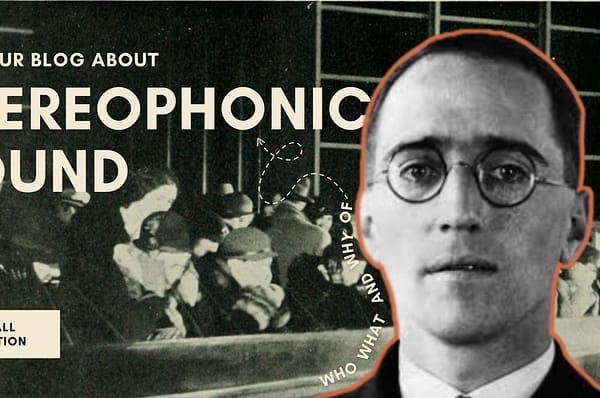Vinyl records, often cherished for their nostalgic charm, have been known to come with an environmental tune that’s far from harmonious. Polyvinyl chloride, or PVC, the primary material used in vinyl production, is notoriously hard to recycle and involves the release of toxic chlorine-based chemicals. In fact, PVC has earned the dubious honor of being dubbed by Greenpeace as the “most environmentally damaging plastic” globally. Researchers at Keele University have shed light on the ecological footprint of the average vinyl record. They’ve found that the typical vinyl record contains around 135 grams of PVC and contributes about 0.5 kilograms of carbon dioxide emissions to the atmosphere. To put this in perspective, that’s akin to driving a car fueled by petroleum for about 2.5 kilometers. Considering that 41 million vinyl records were sold in the US alone in 2022, these emissions start to stack up, and we haven’t even factored in the carbon footprint of packaging and transportation.
Is Streaming Music Better Then?
While streaming music online might seem like a more environmentally friendly alternative, it’s not as green as it may appear. The server farms powering our access to vast music libraries rely heavily on energy, often sourced from coal and other non-renewable resources. In fact, researchers from Keele University estimated that streaming an album for 17 hours could result in the same carbon emissions as producing a vinyl LP. CDs, which are made from recyclable plastic, fare a bit better, with five hours of streaming equating to the emissions of one CD.
In reality, streaming music has likely generated more emissions than other formats due to the way we consume it. With playlists readily available, music plays continuously in the background, leading to longer listening sessions. This culture of continuous streaming has potentially led to music-streaming-related greenhouse gas emissions as high as 350 million kilograms per year in the US alone, surpassing the emissions of the peak CD years. Some environmentally conscious efforts have surfaced in the vinyl industry, such as record pressing plants using green energy and even re-engineering CD presses to create vinyl from PET plastic instead of PVC. Additionally, innovations like bioplastic vinyl records offer a glimmer of hope for a more eco-friendly future.
The figures suggest that any of these physical formats (Vinyl, CDs, or MP3 players) is a better choice than continuous streaming. Intriguingly, the process of making PVC compound for vinyl records is similar to using a garlic press on Play-Doh. Once PVC is synthesized from its base chemicals, it’s mixed with various additives, heated, extruded into strands, and chopped into pellets.
A Little Background
Back during the vinyl’s heyday in the 1970s, a company called Keysor-Century Corporation supplied a staggering 20 million kilograms of PVC annually to the US record industry. Unfortunately, this company was an illegal polluter and faced multiple investigations and fines related to exposing workers to toxic fumes and dumping toxic chemicals.
Vinyl records, along with cassettes and CDs, are products of the petrochemical industry. During peak sales periods in the US, nearly 60 million kilograms of plastic were consumed annually, resulting in more than 140 million kilograms of greenhouse gas emissions each year.
Analogue vs Digital: The Ecofight
However, framing the choice between physical media and streaming as an environmental solution is not entirely accurate. Digital media, though seemingly virtual, relies on energy-intensive data storage, processing, and transmission infrastructures that may have higher greenhouse gas emissions than the petrochemical plastics used in physical formats like LPs. While the energy required to stream individual songs or albums is minimal compared to manufacturing physical formats, the cumulative energy impact of billions of streamers who expect instant access to unlimited music is substantial. This culture of continuous streaming has led to an increase in greenhouse gas emissions associated with digital music consumption.
Furthermore, the devices required to access these digital infrastructures, such as smartphones and laptops, depend on the exploitation of natural and human resources globally. These devices also quickly become obsolete, contributing to electronic waste and further environmental challenges.
Efforts are underway to make vinyl more eco-friendly, with Dutch companies exploring recyclable, non-PVC materials like PP, PET and polyester. However, these initiatives face resistance from vinyl enthusiasts who value the traditional feel and sound. Nevertheless, if these materials can offer a greener alternative, their unique characteristics should be considered strengths, not weaknesses.
Streaming services like Spotify have begun to acknowledge their environmental impact, but the true extent of their carbon footprint may be higher than reported, especially as they subcontract data storage and processing to cloud corporations. Digital music relies on these infrastructures, which in turn rely on significant energy resources.
What’s The Crux?
In conclusion, the environmental impact of music consumption, whether through physical media or streaming, is a complex issue deeply intertwined with energy-intensive processes and the broader digital infrastructure. Addressing this challenge requires a comprehensive understanding of the aggregate energy effects and the broader implications of our lifestyles on the environment – it’s about time we begin to question them.





